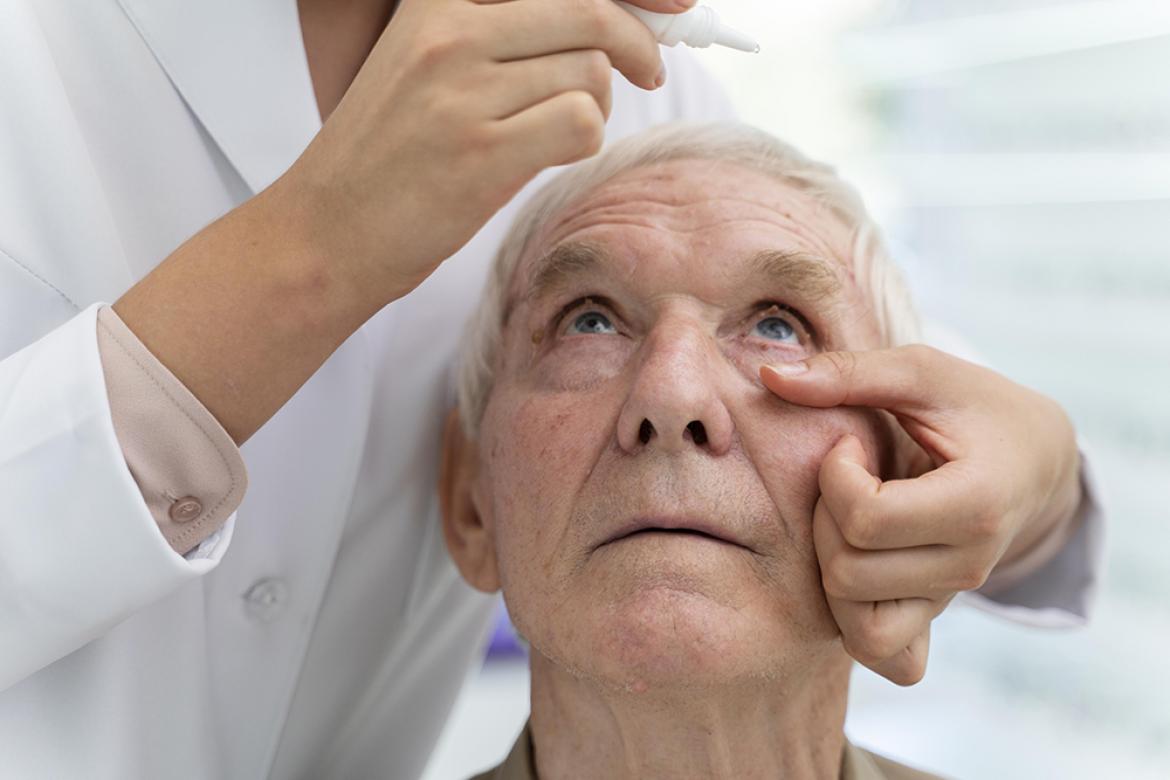Understanding the Link Between Diabetes and Eye Health: What Every Patient Needs to Know

Introduction
Diabetes is more than just a blood sugar problem—it’s a complex, chronic condition that can affect many parts of the body, including the eyes. Diabetes is a leading cause of preventable blindness in working-age adults worldwide.
Despite this, the link between diabetes and vision is often underestimated or overlooked until noticeable symptoms develop. The good news? With awareness, regular eye exams, and early treatment, most diabetes-related vision loss can be prevented.
In this article, we examine the relationship between diabetes and eye health, the common conditions to be aware of, and how timely care can have a profound impact.
How Diabetes Affects the Eyes
Diabetes affects your body’s ability to regulate blood sugar (glucose). Over time, high blood glucose levels can damage blood vessels, including the delicate capillaries that nourish the retina, the light-sensitive tissue at the back of the eye.
This damage can lead to several eye conditions collectively referred to as diabetic eye disease. These include:
Let’s examine each of these conditions more closely and their impact on vision.
1. Diabetic Retinopathy: The Most Common Diabetes-Related Eye Disease
Diabetic retinopathy occurs when high blood sugar levels damage the small blood vessels in the retina, causing them to leak, swell, or become blocked. Over time, this can lead to abnormal blood vessel growth and scarring, ultimately impairing vision.
Stages of Diabetic Retinopathy:
-
Mild to Moderate Non-Proliferative Retinopathy – microaneurysms and small leaks
-
Severe Non-Proliferative Retinopathy – more widespread vessel damage
-
Proliferative Retinopathy – new, fragile blood vessels form, which can bleed into the eye
Many people do not experience symptoms until the disease has advanced, making regular screening essential.
Symptoms (when they appear):
-
Blurred or fluctuating vision
-
Floaters or dark spots
-
Vision loss or blind spots
-
Difficulty seeing at night
2. Diabetic Macular Oedema (DMO): Swelling at the Centre of Vision
The macula is the part of the retina responsible for sharp central vision. In people with diabetes, fluid from leaking retinal vessels can accumulate in the macula, causing it to swell—a condition called diabetic macular oedema.
DMO can occur at any stage of diabetic retinopathy and is one of the most common causes of vision loss in people with diabetes.
Symptoms:
-
Blurred or wavy central vision
-
Colours appearing faded or washed out
-
Difficulty reading or recognising faces
3. Cataracts: Clouding of the Eye's Natural Lens
People with diabetes are more likely to develop cataracts at a younger age, and the condition may progress faster than in non-diabetics.
High glucose levels can cause changes in the lens’s structure, leading to cloudiness and loss of clarity over time. While cataracts are common with ageing, they are often more severe and develop earlier in those with poorly controlled diabetes.
Symptoms:
-
Blurry or hazy vision
-
Increased glare sensitivity
-
Difficulty with night vision
-
Colours appearing dull
4. Glaucoma: Pressure-Related Damage to the Optic Nerve
Diabetes increases the risk of open-angle glaucoma, the most common type. Elevated eye pressure over time can damage the optic nerve, leading to a gradual loss of peripheral (side) vision.
Some people with diabetes also develop neovascular glaucoma, where abnormal blood vessels form in the eye and block fluid drainage, increasing pressure.
Symptoms (often late-stage):
-
Loss of peripheral vision
-
Eye pain or pressure (especially in neovascular glaucoma)
-
Blurred vision
-
Headaches and halos around lights
Why Early Detection Is Vital
One of the most significant challenges in managing diabetic eye disease is its lack of early symptoms. Many people assume their vision is fine until considerable damage has occurred.
This is why regular, comprehensive eye exams are essential for everyone with diabetes, regardless of whether they wear glasses or have any visual complaints.
Early detection can:
-
Catch silent retinal changes before symptoms begin
-
Prevent permanent vision loss through early treatment
-
Reduce the need for complex surgery or injections
-
Improve long-term outcomes with better glucose and pressure control
How Often Should Diabetic Patients Have Eye Checks?
Type 1 Diabetes: First eye exam within 5 years of diagnosis, then annually
Type 2 Diabetes: Eye exam at time of diagnosis, then at least once per year
Pregnant women with diabetes: Eye exam before pregnancy or during the first trimester
Your ophthalmologist may recommend more frequent visits depending on the severity of your eye condition and control of your diabetes.
Treatment Options
Treatment depends on the specific condition and its severity. Options may include:
-
Laser therapy to stop leaking blood vessels
-
Anti-VEGF injections to reduce macular swelling
-
Surgery (vitrectomy) in advanced cases
-
Cataract surgery to restore lens clarity
-
Glaucoma drops, laser, or surgery for intraocular pressure control
Managing diabetes through healthy lifestyle choices, medications, and consistent blood sugar monitoring also plays a crucial role in protecting your eyes.
Final Thoughts
Diabetes and eye health are deeply intertwined. Vision changes can be gradual, silent, and irreversible—but with proactive screening and timely treatment, vision loss is not inevitable.
If you’re living with diabetes—or caring for someone who is—it’s time to prioritise regular eye care. Early action could mean the difference between preserved independence and preventable blindness.